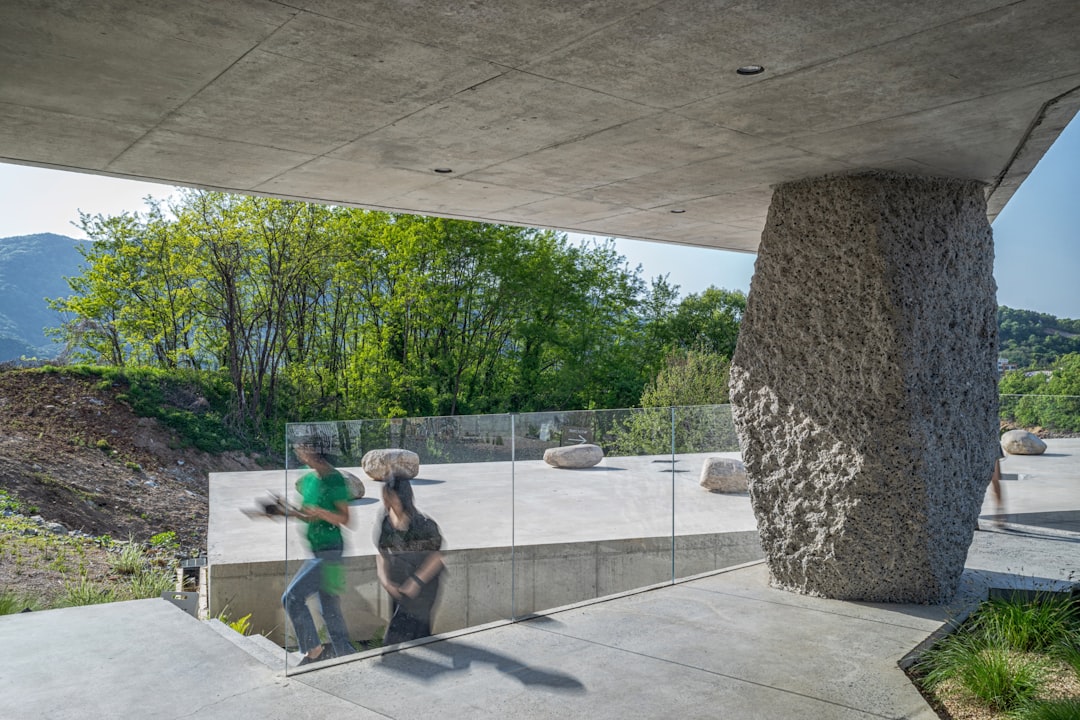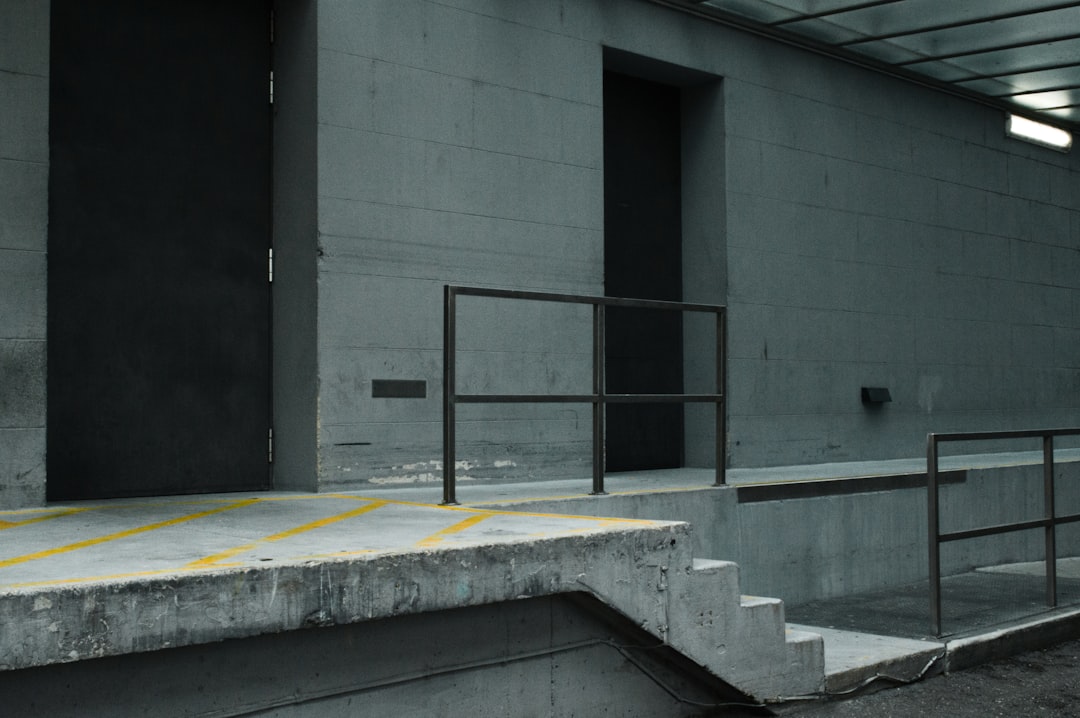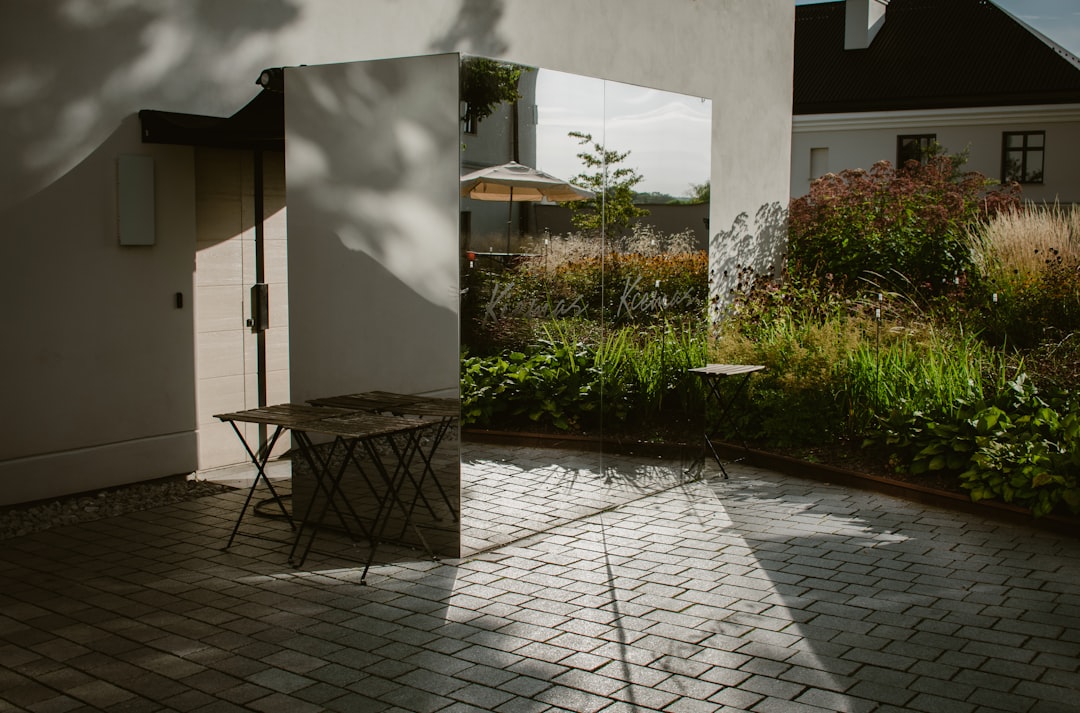

Engage prospects with a scan and streamline customer engagement with FREE QR code marketing tools by Sona – no strings attached!
Create a Free QR CodeFree consultation

No commitment

Engage prospects with a scan and streamline customer engagement with FREE QR code marketing tools by Sona – no strings attached!
Create a Free QR CodeFree consultation

No commitment
In today’s digitally driven world, QR codes have evolved from a novelty into a strategic powerhouse that bridges offline engagement with online action. For concrete patio contractors, qr codes in marketing offer a frictionless way to capture leads and streamline project inquiries without requiring homeowners to download an app or complete long forms on the spot. A single scan can send someone from a yard sign to a gallery, from a brochure to a quote request, or from a truck wrap to verified reviews.
The real advantage lies in converting momentary curiosity into measurable action. Many prospects notice your work while passing a job site or flipping through local mailers. With QR codes, you can turn every sign, truck, brochure, and booth into a lead capture touchpoint, then route that intent into your CRM and follow up faster. This guide shows how to plan, launch, and optimize QR campaigns that transform your offline presence into a high-performing digital funnel for concrete patio projects.

QR codes bridge the gap between physical touchpoints and digital outcomes, making it easier to capture qualified leads, track engagement, and accelerate sales pipelines. When used consistently across your vehicles, yard signs, direct mail, and events, QR codes remove friction and guide homeowners into a streamlined process that turns interest into action.
Many firms lose high-value prospects because busy homeowners will not stop to make a call or type a long URL. Others leave events with a brochure, then forget to follow up. QR codes eliminate those gaps by creating a fast path to book a consultation, request a quote, or explore design options. They also ensure you capture the interaction itself. Once you know where scans happen and which offers resonate, you can replicate those wins.
Here is how to do it effectively:
By turning every outreach into a measurable trigger, QR-powered lead capture rescues missed opportunities and enables faster, more confident follow-up. Sales teams operate with more clarity, and marketing investments become easier to justify because you can connect scans to conversations and revenue.
Concrete patio contractors often struggle to convert offline curiosity into digital leads. Homeowners notice your logo on a truck, your sign on a job site, or your display at a local show. Without a quick path to act, that interest fades. QR codes solve this by connecting any physical asset to a ready-to-use digital destination through QR code marketing that meets the homeowner exactly where they are in the buying journey.
Another common challenge is speed. Traditional methods like phone calls or emails rely on the homeowner’s motivation and availability. A well-placed QR code lets a prospect engage in seconds, whether they are walking the dog past a project or thumbing through a mailer at night. There is no app to download and no long URL to enter. The result is more interactions captured and fewer leads slipping by untracked.
Applied to items you already use, such as yard signs, brochures, invoices, and showroom materials, QR codes transform familiar assets into always-on lead sources. They also provide the analytics needed to evolve your local marketing from guesswork to data-driven growth.

Choosing the right type of QR code ensures a smooth experience for homeowners and better tracking for your team. Most concrete patio contractors benefit from a focused set of formats that support the most common actions buyers want to take.
Two guiding principles will help you decide. First, align the format with the action you want: a vCard for contact saves, a form for quotes, a landing page for galleries and case studies. Second, prefer dynamic QR codes whenever possible. Dynamic codes allow you to update the destination, add tracking parameters, and monitor performance without reprinting.
Prioritize scannability and clarity on every format. The best format is the one that makes the homeowner confident about what they will get in return for the scan and makes follow-up effortless for your team.

Most contractors already invest in local visibility. The issue is that high-quality prospects encounter your assets without a convenient way to respond. QR codes activate those touchpoints, ensuring each sightline can become a measurable lead.
Focus first on placements that get the most eyeballs and align with your buyer’s context. A neighbor passing a job site wants to see finished photos and pricing guidance. An expo visitor wants a quick way to book a consult without waiting in line. A homeowner who keeps your mailer on the fridge wants to act when they have a quiet moment. Tailor the destination and the CTA to each context.
When you treat each surface as a digital entry point and measure the results, you uncover pockets of demand that previously went unnoticed.

Concrete patio projects involve multiple micro-decisions: style, timeline, budget, and contractor trust. QR codes help capture those moments and guide homeowners toward the next step, even if they are not ready to talk immediately. These use cases can be deployed quickly with clear, measurable outcomes.
The best results come from pairing a specific placement with a clear intent. If the homeowner is admiring a finished patio on your yard sign, show them that gallery. If they are holding your brochure, send them to an instant quote form. If they are reviewing an invoice post-install, make it easy to schedule a sealing or maintenance visit.
You can expand these use cases with builder partnerships, community events, or co-marketing with local suppliers. The key is to keep destinations mobile-friendly, brief, and value-focused.
Every scan is a signal that captures intent, context, and timing. By deploying multiple QR codes across your touchpoints, you can automatically segment audiences and feed smarter retargeting. This reduces wasted spend and helps you reach homeowners with messages that match their interest level.
Start by labeling codes according to the funnel stage. A gallery or project inspiration page is top-of-funnel. A quote form is mid-funnel. A booking page or financing application is bottom-of-funnel. When scans sync to your CRM or ad platforms, you can tailor follow-ups based on these stages. For deeper strategy, see Sona’s intent data guide.
With this approach, your follow-up becomes timely and relevant. A homeowner who scanned a “See This Patio” code receives local case studies, while a homeowner who scanned “Get a Free Estimate” receives a fast callback and a link to book a site visit. The result is more conversions at a lower cost per lead.
Disconnected campaigns lead to inconsistent messaging and higher acquisition costs. QR codes unify your offline and digital efforts by creating a single source of measurable intent. When codes on print, vehicles, events, and video all feed the same analytics layer, you can coordinate messaging and optimize the entire journey.
The goal is to create a connected path from first touch to booked project. A homeowner first sees a yard sign, scans to view a gallery, later gets retargeted with a testimonial video, then receives a direct mailer with a code for a spring discount. Each step is trackable, and each scan refines your understanding of that homeowner’s interests.
With a centralized platform to manage your codes and track performance, QR becomes the offline onramp to your digital marketing engine. The result is a consistent, data-informed experience for the homeowner and a more efficient operation for your team.
A strong QR campaign reflects clear goals, thoughtful design, and disciplined measurement. The steps below help you plan and launch a program that enhances lead capture and shortens the path to booked work.
Before you begin, align on what success looks like. Decide if the objective is more quote requests from yard signs, more booked consultations at home shows, or better measurement of direct mail. With that clarity, each step becomes easier.
Start with a problem worth solving. For concrete patio contractors, common goals include capturing leads from neighbors who admire completed projects, converting event visitors into booked site visits, or turning direct mail responders into scheduled estimates.
Match the code type to the action you want. Forms are ideal for quotes. vCards support referrals and quick saves. Dynamic codes add flexibility to adjust destinations later.
Design influences whether someone scans. Your code should be large enough, have strong contrast, and sit near a compelling CTA. Test in real conditions to ensure reliability.
Roll out codes where they will be seen by high-intent audiences. Assign a unique code to each placement so you can track what performs best.
Measurement turns QR from a convenience into a growth engine. Monitor scan activity, conversion rates, and follow-up speed, then adjust for higher performance.
When you follow these steps, your QR program becomes a repeatable process rather than a one-off experiment. Over time, your assets compound in value because each new code adds more data and more opportunities to improve.
For many concrete patio businesses, the problem is not a lack of leads but a lack of visibility into which efforts actually create revenue. QR codes produce a measurable signal at the exact moment someone is interested. The key is to capture that signal, connect it to downstream actions, and attribute outcomes to the right source, aided by offline attribution best practices.
Basic analytics tell you who scanned, when, and where. Advanced analytics link scans to form fills, scheduled appointments, and closed deals. That level of clarity lets you see, for example, that yard signs in a specific neighborhood produce higher quality leads than mailers in another, or that a “See This Patio” CTA converts better than “Get a Quote” at the awareness stage.
Platforms like Sona QR help capture scan data, manage dynamic destinations, and unify performance reporting. With Sona, you can connect anonymous scans to known contacts through identity resolution, build multi-touch attribution models, and visualize how QR engagement interacts with website visits, ad clicks, and email activity. The end result is a clear line of sight from the first scan to booked revenue.
Scaling what works requires a combination of disciplined tagging, strong CTAs, and automated follow-up. As you add codes across assets, your dataset grows, and your campaigns become more precise.
Consider how different homeowners prefer to engage. Some want to browse photos in peace, others want a quick call back, and some want to choose a time on your calendar. Offer multiple entry points and let the homeowner pick the path.
These practices increase scan volume and improve conversion quality. Over time, you will know where to invest, which messages resonate, and how to follow up for maximum impact.

The most effective QR deployments meet homeowners at the moment of curiosity and make the next step obvious. The examples below illustrate how small changes in placement and messaging can produce outsized results.
At one regional home expo, a contractor added QR codes to all booth banners and handouts, pointing to a short quote form and a “book now” calendar. By eliminating paper sign-ups and manual entry, they sped up follow-up and saw a significant increase in consultations compared to previous events.
You can also use QR codes to power reviews, referrals, and post-install surveys. For example, adding a QR code to the final invoice that says “Scan to Review Your Experience” can lift review volume and create a referral loop with an incentive, while giving you valuable feedback to improve your process.
QR programs succeed when they are easy to scan, easy to understand, and easy to measure. Invest in design and placement, educate your team, and check performance often. Avoid preventable mistakes like tiny codes, low contrast, unclear CTAs, or destinations that are not mobile-friendly.
Regularly review which codes are generating pipeline, not just engagement. A code that draws many scans but few quotes may be mismatched to the audience or the stage of the journey. Adjust the CTA, destination, or placement until scan-to-conversion improves.
With these fundamentals, your QR investments deliver consistent returns and fewer missed opportunities.
QR codes are more than a shortcut: they are a strategy. For concrete patio contractors, they turn every truck, brochure, yard sign, and event display into a digital entry point that captures real demand. QR codes also fix two persistent challenges: lack of visibility into what works and slow, inconsistent follow-up.
Key benefits include:
Today’s concrete patio market rewards responsiveness and clarity. By embedding QR technology across offline touchpoints, you shorten the distance between a homeowner’s inspiration and your next booked project. The same system that captures more qualified leads also surfaces the insights needed to optimize your creative, your placements, and your follow-up.
Tools like Sona QR can help you generate codes, manage dynamic destinations, and track scans across channels. With Sona, you can connect scans to downstream actions in your CRM, build retargeting audiences, and attribute revenue back to the QR touchpoints that started the conversation. The end result is a marketing engine that is both modern and measurable. Start creating QR codes for free.
Use these strategies to transform static materials into always-on lead generators and position your team at the forefront of digital innovation in the concrete patio space.
QR codes have transformed the concrete patio contractor industry from traditional marketing efforts into dynamic, measurable growth channels. Whether it’s capturing qualified leads from on-site displays, enhancing customer engagement with instant access to portfolios and testimonials, or streamlining appointment bookings, QR codes replace static materials with interactive, mobile-friendly actions that deliver real-time data and drive business growth.
Imagine knowing exactly which brochures, yard signs, or project showcases generate the most inquiries—and being able to optimize your marketing instantly. With Sona QR, you can create dynamic, trackable QR codes in seconds, update campaigns without reprinting, and link every scan directly to your sales pipeline. No more missed opportunities, just smarter lead capture and higher conversions.
Start for free with Sona QR today and turn every scan into a new customer, a booked consultation, or a closed contract.
QR codes help concrete patio contractors convert offline interest into measurable digital leads by providing a fast, frictionless way for homeowners to view galleries, request quotes, and book consultations.
Contractors should select QR code formats based on the desired homeowner action, such as web links for galleries, forms for quotes, vCards for contact sharing, and dynamic codes for flexible, updateable destinations.
High-impact placements include yard signs at job sites, contractor trucks and vehicle wraps, direct mail and flyers, home and garden show booths, and showroom counters to reach homeowners in relevant contexts.
QR codes provide real-time data on scan location, timing, and user intent, enabling sales teams to prioritize outreach, automate follow-ups, and integrate leads with CRM systems for better pipeline management.
Use large, high-contrast codes with clear, benefit-driven calls to action near the code, avoid overly intricate designs that reduce scannability, and test codes in real-world conditions to ensure reliability.
Contractors can add QR codes to final invoices or project signs that link to review pages, referral programs, post-install surveys, or maintenance scheduling to increase reviews and encourage repeat business.
Steps include defining a clear campaign goal, selecting the appropriate QR code type, designing and testing the code, deploying across targeted channels, and tracking performance to optimize and scale results.
Dynamic QR codes allow contractors to update destination URLs and track scan performance without reprinting materials, enabling quick adjustments for seasonal offers or changing promotions.
Avoid placing codes that are too small or low contrast, unclear calls to action, destinations that are not mobile-friendly, and complex designs that impair scanning to ensure effective lead capture.
By using QR codes consistently across offline assets like print materials, vehicles, events, and signage linked to a centralized analytics platform, contractors can unify messaging and measure campaign impact across channels.
Use Sona QR's trackable codes to improve customer acquisition and engagement today.
Create Your FREE Trackable QR Code in SecondsJoin results-focused teams combining Sona Platform automation with advanced Google Ads strategies to scale lead generation

Connect your existing CRM

Free Account Enrichment

No setup fees
No commitment required

Free consultation

Get a custom Google Ads roadmap for your business






Launch campaigns that generate qualified leads in 30 days or less.
